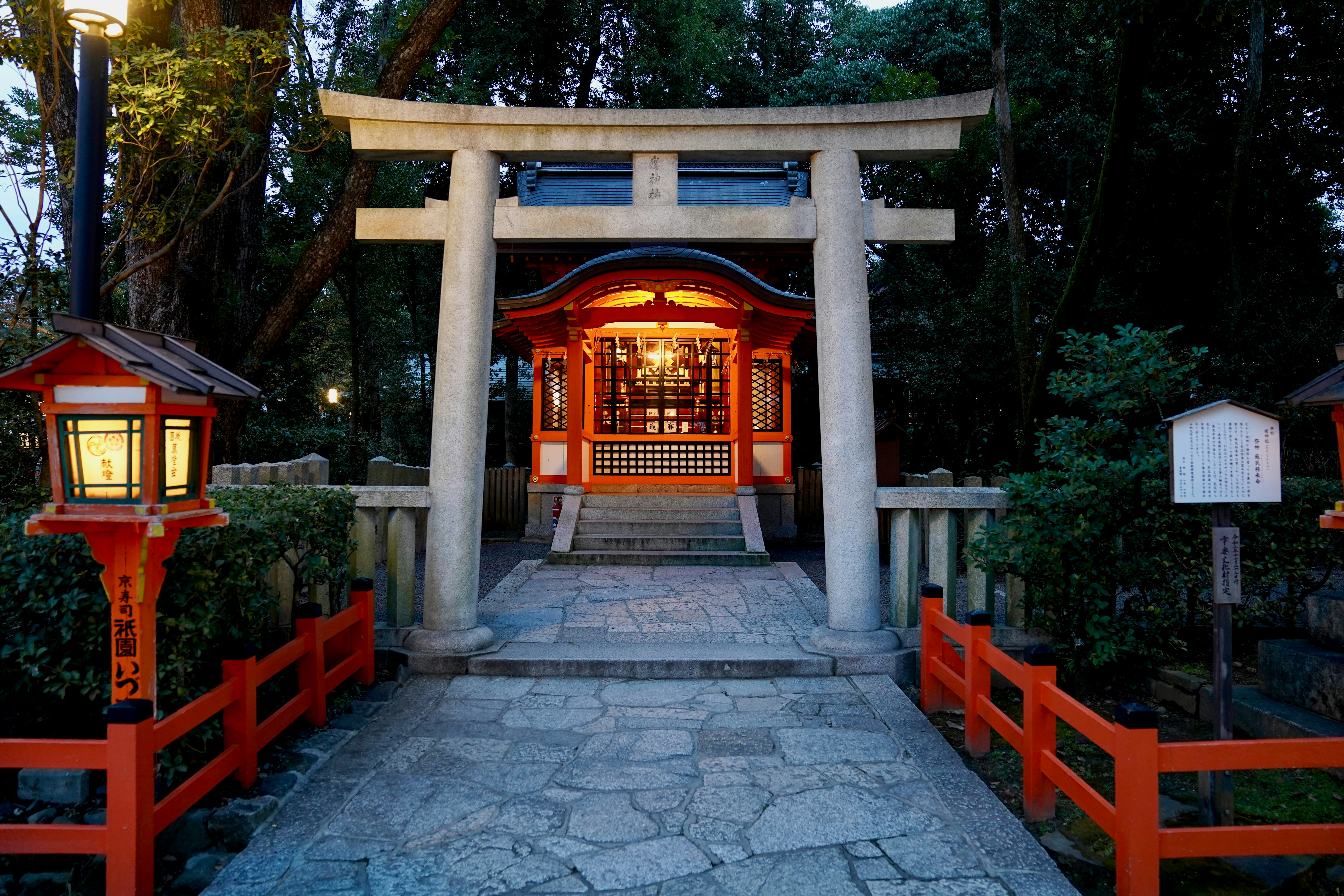Shrine & Temple Rentals: What’s Possible
Author
Chan
Date Published

Hosting an event in a shrine or temple can elevate the atmosphere from elegant to spiritual when executed with respect and precision. I have coordinated programs in Kyoto, Nara, and Kamakura where one small misunderstanding about cultural limits could have caused major reputational risk. Every sacred site follows its own rhythm, shaped by centuries of faith and local governance.
This guide explains what is truly possible inside these revered spaces so planners can design authentic, compliant, and memorable experiences.
Permit Scope and Photography Rules
Shrines and temples operate under independent management offices. A site that appears open to visitors is not automatically available for private hire. Some allow exclusive morning use before public opening, while others only grant partial access for specific zones such as inner courtyards or gardens.
Photography is one of the most misunderstood restrictions. Many properties prohibit shooting toward altars or statues, while some require camera operators to remain behind a designated boundary rope. Drones are almost never allowed, and livestreams may need priest supervision.
I include the clause:
All photography, filming, and digital recording shall be carried out only within areas and times approved by the shrine or temple authority.
Planner Checklist
- Obtain a map showing camera zones and equipment limits.
- Confirm the contact person from the shrine office for the day of shoot.
- Verify usage rights for photos in international marketing.
- Prepare Japanese-language signage for guests indicating restricted areas.
- Include the permit number and officer’s seal in your event file.
Confirm written photo permits and location diagrams at least one month before the event.

Time and Noise Limits in Local Context
Shrines and temples usually observe early opening and early closing times, often finishing by dusk. Noise levels are heavily restricted due to proximity to residential or cultural zones. Even polite applause or microphone use may be limited. During certain days such as festivals, community cleaning, or ritual weeks, private events are suspended altogether.
I always coordinate directly with the head priest and the chōnaikai representative to ensure the event will not disturb daily prayers or neighborhood harmony.
I include the clause:
All sound, lighting, and public address use shall conform to the daily schedule and decibel limit approved by temple administration.
Planner Checklist
- Conduct an on-site sound test during the same time window as the event.
- Review local festival calendars to avoid overlap.
- Confirm parking hours for supply vehicles.
- Arrange discreet staff communication methods like earpieces instead of radios.
- Record the temple’s official closing hour on your run sheet.
Align your timeline with temple quiet hours and request written sign-off for setup and cleanup hours.
Alcohol and Catering Constraints
Many temples disallow alcohol entirely, while certain Shinto shrines permit limited ritual sake under supervision. Food preparation must respect cleanliness and waste protocols defined by the property. Most do not allow external caterers unless pre-approved, and open flames or grills are universally prohibited.
I once coordinated a Kyoto evening tea ceremony where even electric kettles had to be certified for indoor safety and pre-tested by the shrine’s electrician.
I include the clause:
All food and beverage services shall comply with the shrine’s sanitation, waste, and offering policies, excluding open flames and unapproved alcohol service.
Planner Checklist
- Verify whether ritual sake can be included and in what volume.
- Arrange cold storage outside the sacred compound if required.
- Confirm approved disposal method for catering waste.
- Prepare bilingual menus for cultural clarity.
- Check if barefoot or tatami entry rules affect staff serving routes.
Secure food service approval before finalizing any menu or vendor contract.
Ceremony Versus Reception Feasibility
Ceremonies are usually welcomed, but receptions are rarely permitted within the sacred core. Banquets, buffets, or entertainment are redirected to nearby halls or hotel ballrooms. Some urban shrines such as Meiji Jingu or Dazaifu Tenmangu provide purpose-built event wings that allow dining without violating sanctity.
Before finalizing, planners must distinguish between ritual space, visitor area, and facility annex. Each has different permissions and rental pricing.

Typical Usage Comparison
Here is the compilation of type of activities that can be done in shrines and temples with permission type and practical notes.
Type of Activity | Shrine Permission | Temple Permission | Notes |
|---|---|---|---|
Blessing Ceremony (jinzenshiki) | Usually permitted | Often permitted | Must follow religious sequence and attire rules |
Seated Lunch | Rarely allowed | Allowed only in annex halls | Requires advance cleaning plan |
Reception with Music | Prohibited | Prohibited | Redirect to partnered hotel or community center |
Photo Session | Allowed under permit | Allowed under permit | Avoid altar background |
Tea Service or Workshop | Sometimes allowed | Often allowed | Keep duration under one hour |
I include the clause:
The scope of ceremony and reception shall follow the approval of the managing priest, defining boundaries for dining, language, and attire.
Planner Checklist
- Determine which site zones can be rented privately.
- Request a written map showing ritual versus public areas.
- Confirm bilingual officiant options if vows include English.
- Verify table and chair availability in annex halls.
- Budget transfer time between ceremony and dining venue.
Separate ceremonial flow from entertainment logistics in the proposal.
Weather Backup Planning
Most shrine courtyards are unpaved gravel or sand, which quickly become muddy under rain. Large tents are seldom allowed because they damage grounds or block sacred lines of sight. Floor mats and protective boards must be installed under equipment.

Because these venues rarely refund for weather cancellation, having a backup site is non-negotiable. I typically secure a hall within ten minutes of transfer and duplicate key décor elements to maintain visual continuity.
I include the clause:
In case of inclement weather, the organizer shall activate the designated backup venue within a five-kilometer radius to ensure continuity of guest experience.
Planner Checklist
- Identify backup site with equal capacity and accessibility.
- Include shuttle timing between primary and alternate site.
- Store protective flooring in advance on-site.
- Verify insurance coverage for weather-related relocation costs.
- Communicate contingency plan to vendors in both English and Japanese.
Finalize the alternate venue and include both addresses in all guest materials.
FAQs
1. Can shrines or temples be rented for private dinners?
Only a handful of properties with modern annexes allow dining, usually within strict time and sound limits.
2. Are foreign-language ceremonies accepted?
Yes, but scripts often require prior review by the priest to ensure tone and sequence align with tradition.
3. Can decorations include candles or incense?
Only if provided or supervised by the temple staff, as outside materials are seen as unsafe or impure.
4. How far in advance should applications be submitted?
Most shrines request at least three months’ notice, while heritage temples may need up to six months for board approval.
5. Are there cleaning or restoration deposits?
Yes, many charge a refundable deposit for post-event inspection and require mats under all heavy fixtures.
Conclusion
Renting a shrine or temple is not about grandeur alone. It is about earning trust through precision, modesty, and deep respect for custom. Every detail—from photography permits to cleanup timing—reflects your understanding of the culture you are entering. When approached thoughtfully, these venues can deliver experiences that guests remember long after the event ends.
For bilingual coordination, permit applications, or heritage venue introductions, reach out to us.